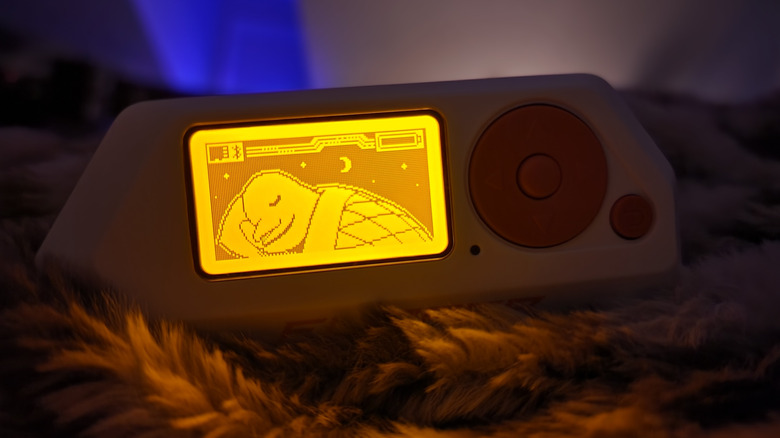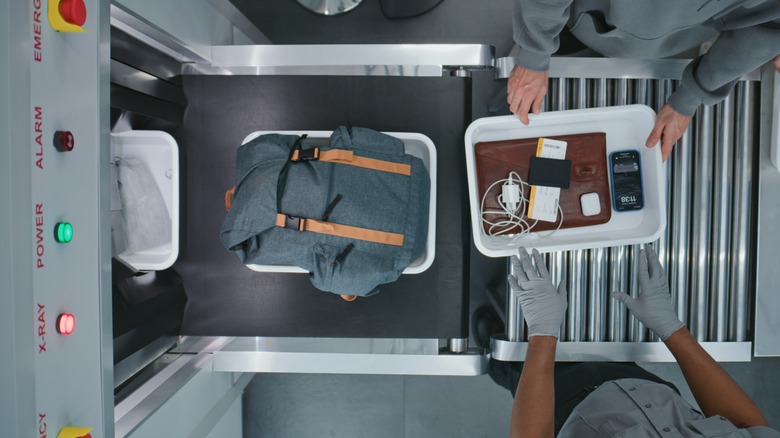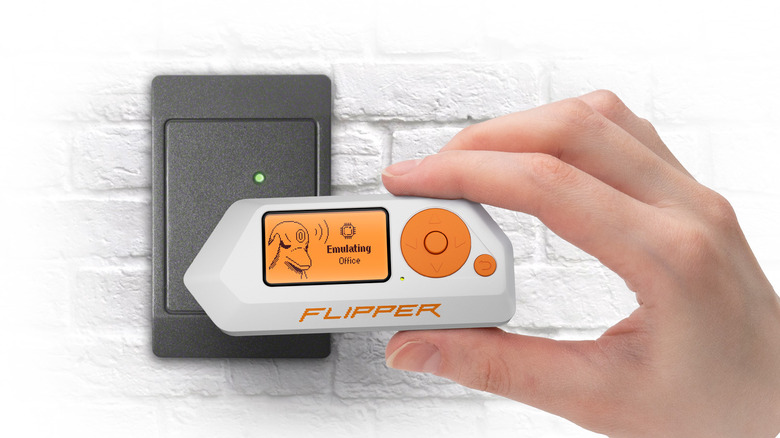Does TSA Let You Travel With A Flipper Zero In Your Carry-On Luggage?
The Flipper Zero is a versatile device that hardware and software developers frequently rely on for pen-testing many different types of digital interfaces, including RFID badges, NFC cards, and other everyday technologies that rely on short-range communication protocols. While this handy gadget can definitely damage some systems in the hands of an evildoer, that's kind of the point: In the right hands, the Flipper Zero is designed to infiltrate, but only for the betterment of cybersecurity.
That said, the Flipper Zero's public perception isn't as clean-cut as the benevolent purposes it was designed for in the first place. Governments, banks, and retailers the world over have worried about the pen-tester being used as a malevolent hacking device. It's a valid concern, but how exactly do these wary vibes trickle down to an organization like the TSA?
As it stands, there are no official TSA restrictions for the Flipper Zero, but that doesn't mean you won't be stopped or questioned by a curious agent for carrying one. After all, it does have an unusual appearance, landing somewhere between a palm-sized gaming console and an E-ZPass. It's always best to be over-prepared for this type of interaction, though, so we thought we'd dive into the nitty-gritty of the TSA's current stance on these types of electronics and their power sources.
How the TSA classifies the Flipper Zero
The Transportation Security Administration's official website has an answer for just about any question you could think to ask about air travel, and also includes an official list of every item you're allowed to bring or not bring on a flight. And should there be specific instructions for how to pack or store an item, the list entry will contain that information.
For example, the official listing for "phone chargers" (also referred to as portable chargers and power banks) says these types of devices must be stored in a carry-on bag, and are 100% not allowed in a checked bag. Since the Flipper Zero is a small electronic device with a built-in LiPo (lithium polymer) battery — and there's no official entry for the product on the TSA's official list – one can assume the TSA treats the Zero as it does most other consumer tech. That means you should always pack it in a carry-on bag, with the device turned off.
Considering how small the Flipper Zero is, don't place it in its own bin during baggage screening either. Instead, keep it bundled up with other small electronics and accessories in your carry-on.
Explaining the Flipper Zero at airport security
What exactly do you do if a TSA agent questions you about the device? Leading with honesty is always your best bet: Tell them it's an electronic multi-tool for wireless testing. It also wouldn't be a bad idea to travel with your Flipper Zero's quick-start guide, or any other documentation that explains what the product is.
At the end of the day, the final call on whether it flies with you or not is left to the TSA's discretion. That means there's a chance you and yours could be the exception to the standard electronics rules on a particular day. Additionally, TSA recommends reaching out to its AskTSA team if you have questions about a device the agency doesn't list on its website. It's worth noting that the Flipper Zero posed a problem for at least two different passengers in London.
One had their device seized while the other passenger was temporarily detained but ultimately had their Flipper returned to them and they were allowed to fly. Thanks to its many wireless capabilities, the Flipper Zero can be quite a convenient device to bring on a trip, even if you're not going to use it for research and development purposes. With a bit of know-how, you can turn the Zero into an IR blaster for a hotel room TV, or use its NFC functions to create a digitized clone of your room key.


